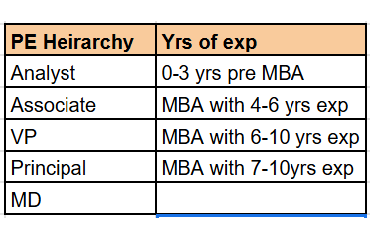
Finance has always been a core pillar of business, but the way senior finance positions are shaping up in India in 2025 feels different. The expectations are bigger, the responsibilities broader, and the stakes much higher. A Chief Financial Officer, a Finance Controller or a Vice President of Finance is no longer a number cruncher tucked away with spreadsheets. These roles sit at the front lines of growth, governance, and global expansion.
Why the Spotlight on Finance Heads is Brighter than Ever
The past few years have been unpredictable. From inflationary spikes to volatile currency movements, from regulatory changes to the tech boom, companies across India have learned the hard way that money management cannot be a back-office exercise. Finance heads are now expected to step into the role of strategist and problem solver.
Take the case of a large quick-service restaurant company planning to open dozens of new outlets across India and even test waters in the UK. Their head of finance is asked not only to close books and ensure compliance but also to map long-term financial strategy, structure capital raising, and work hand in hand with the business head to support expansion. Compare that to a beauty-tech company backed by global investors. Their CFO isn’t just filing tax reports but also pitching to private equity, negotiating debt, managing audits across group entities, and shaping the business model.
This is why 2025 feels like a defining year. Finance leaders are expected to carry both the sword and the shield.
The CFO Is More than the Company’s Accountant
The Chief Financial Officer has turned into a three-dimensional role.
First, the compliance anchor. They are still the ones ensuring audits go smoothly, filings happen on time, and governance frameworks meet SEBI, RBI and international standards. Miss a deadline here and the penalties can run into crores.
Second, the growth architect. Today’s CFO must think about capital allocation, fundraising, and mergers. They negotiate with banks, NBFCs, private equity, sometimes even venture capital. They carry the heavy responsibility of making sure expansion plans are not castles in the air but projects grounded in financial feasibility.
Third, the communicator. A CFO must explain numbers to people who are not numbers people. Boards, investors, and CEOs need stories more than raw data. A fall in margins must be explained in terms of shifting consumer behavior, not just rows on an Excel sheet.
Chartered Accountants still dominate CFO postings in India, but many companies also look for professionals who have worked abroad or handled cross-border compliance. An MBA in Finance is valuable, but the CA tag commands deeper trust because of its rigor in technical foundations.
Finance Controller Is The Keeper of Discipline
If the CFO looks outward, the Finance Controller looks inward. Their focus is on structure, process, and discipline. They ensure that every outlet in a QSR chain follows proper cash handling, that every procurement deal is recorded properly, and that every forecast is compared against actuals without creative accounting.
In many ways, the Finance Controller is the shield of the organization. When growth targets create pressure to cut corners, it is often the Controller who insists on controls and governance. Without that discipline, a CFO cannot confidently present numbers to investors.
In terms of career path, Finance Controller positions appeal to professionals who want to grow into CFOs eventually but first want to establish their strength in technical mastery and operational leadership. Salaries vary, but in a multinational firm Controllers can earn upwards of ₹50–70 lakhs annually, while in medium enterprises compensation usually stays closer to ₹25–40 lakhs.
VP Finance Has The Hybrid Role
Some organizations skip the VP Finance title altogether, but where it exists, it is becoming an important bridge. Think of it as a role that blends the operational depth of a Controller with the external-facing responsibilities of a CFO.
A VP Finance often drives corporate finance, FP&A, treasury, and works directly with the CFO on fundraising or due diligence for acquisitions. In startups, the VP Finance may function as a de facto CFO until the company matures enough to hire someone who can face the board and investors. In legacy companies, they may be the person tasked with digitizing financial processes, implementing ERP systems like SAP or TallyPrime, or spearheading cost reduction initiatives across the supply chain.
It is a role that suits professionals who are comfortable working in grey zones — people who thrive on juggling strategic priorities with day-to-day firefighting.
Skills That Define Finance Leaders in 2025
No matter the title, some skills are becoming universal across senior finance jobs in India.
-
Digital literacy is now essential. Finance leaders are expected to understand automation tools, cloud-based ERPs, and predictive analytics.
-
Global exposure matters. Companies are expanding abroad, so familiarity with foreign exchange risks, transfer pricing, and overseas compliance makes a candidate stand out.
-
Communication is non-negotiable. A finance head who cannot explain numbers in plain language will struggle to win trust.
-
Crisis readiness is critical. Scenario planning, stress testing, and rapid financial modeling have become core tools.
The Hard Realities Behind the Prestige
It is tempting to see these roles as glamorous but the challenges can be relentless.
The pressure is intense. A CFO in a startup burns long hours balancing investor expectations with operational realities. A Finance Controller is constantly battling to keep processes watertight while business heads push for flexibility. A VP Finance sits in the middle, often carrying double the workload without the final decision-making power of a CFO.
Talent shortage is another reality. India produces thousands of CAs and MBAs every year, yet companies complain that very few combine technical excellence with strategic vision and people management.
Cultural frictions also exist. In family-owned businesses, finance leaders may find themselves torn between modern governance practices and traditional family-driven decision making.
Burnout is not uncommon. These are high-responsibility positions, and the weight of being accountable for every rupee can take a toll on personal wellbeing.
What the Job Market is Saying
Looking at current job postings across sectors, a few patterns stand out.
-
Compensation for senior finance leaders in India ranges from ₹70 lakhs to over ₹2 crores annually, depending on the size of the company and industry. Startups often balance lower fixed pay with equity.
-
Sectors like consumer goods, QSR, beauty-tech, SaaS, and retail are actively hiring.
-
Companies are leaning toward candidates with scaling experience. Someone who has set up accounting systems during rapid expansion is often preferred over someone with only steady-state experience.
-
Global ambitions are pushing companies to recruit finance heads who have handled overseas entities and international audits.
Closing Thoughts
Who truly thrives in these roles? The answer goes beyond technical skills. A CFO needs to be both strategist and storyteller. A Finance Controller must stand firm on discipline even under growth pressure. A VP Finance must adapt to being part-strategist, part-operator.
The market is rewarding leaders who can carry both the calculator and the compass. Numbers alone are not enough anymore. Senior finance professionals in India in 2025 are expected to lead, communicate, and navigate uncertainty with steady hands.
The real question is not just whether you can do the job, but whether you can carry the weight of being both the guardian and the guide for a business that looks to finance for clarity in turbulent times.
Don’t stress about searching every career page or job site. Stay ahead with the latest opportunities from different sources right here!
Related Articles
Private Equity (PE) is one of the most coveted industries in finance. One of the highest paying industries, Private Equity (PE) attracts absolute creme-de-la-creme of MBA graduates, management consultants, and investment bankers. Also highly competitive, PE funds hire only a handful of investment professionals across levels in a year.
A+ research team has spoken to multiple PE professionals across domestic and global PE funds in India. In the table below, we have compiled average base compensation, variable (bonus) and carry components at blue chip global PE funds in India.
| Role | Yrs of exp | Large Global PE Funds (base salary) | Bonus (as a % of base) | Carry | |
| Analyst | 0-3 yrs pre MBA | $60K-$80K | 60-100% |
Notional Carry or LTI or Certain bonus is paid in the form of carry distribution in case of multi-billion dollar funds*
|
|
| Associate | MBA with 4-6 yrs exp | $100K-$150K | 80-100% | ||
| VP | MBA with 6-10 yrs exp | $200K- $250K | 90-120% |
Estimated 0.5%-2% of the carry pool for a multi billion dollar fund*
|
|
| Principal | MBA with 7-10yrs exp | $300K-$400K | 90-120% | ||
| MD | $500K+ | 100-150% | |||
| Notes: |
These figures are estimates of salaries at top global PE funds like Bain, Carlyle, TPG, Warburg Pincus, General Atlantic and the likes
|
||||
|
Buyout focused funds have 30-50% higher base salaires and respective bonuses
|
|||||
|
*These are estimates from the information gathered through our network; might change/vary with more data
|
|||||
This market research report presents Private Equity funds that are active in Indian markets as of 2025, and have an AUM of 250 million or more. This list includes both domestic and global private equity funds. While comprehensive, this is not an exhaustive list.
This report might benefit product and service providers to the Investment Management industry, Consultants and Investment Bankers, and job seekers aspiring to break into one of the most coveted, competitive and high paying industries globally.
We’ve all been there. You open your phone “just to check one thing” and—boom—you’re 72 minutes deep into scrolling reels. Somewhere between a cute puppy video and a billionaire success story, you forget what you came for. And then it hits you—*the guilt*. Work is pending, chores are waiting, and your brain feels… fried.
Reels and short videos are incredible sources of information and entertainment. But here’s the tricky question—is our brain really equipped for this kind of content?
---
1. Emotional Whiplash is Real
Your brain is the most powerful thing God gifted you. It’s built to process one emotion at a time. You can’t laugh and cry at the same moment, right? But reels force your brain into emotional gymnastics:
- 0:02 – Delicious biryani (hungry!)
- 0:05 – Horrifying accident (sad!)
- 0:08 – 19-year-old becomes a billionaire (competitive!)
- 0:12 – Poor man searching for food (grateful… or guilty?)
Within seconds, you’ve felt 10 different things. That’s not multitasking—it’s emotional chaos. Over time, this dulls your ability to feel any emotion deeply.
---
2. The Trap is Invisible
No one says, “I’m going to watch reels for the next 3 hours.” The scary part? You don’t even realize when you’ve been sucked in. Your brain stops being in charge—you’re just swiping.
---
3. Post-Scroll Blues
Ever felt low, restless, or oddly sad after long scrolling? That’s your brain struggling after rapid-fire emotional switches. And since it happens repeatedly, it’s no longer “just a bad day.” It’s rewiring your mood patterns.
---
4. Reality Gets Distorted
The internet has millions of “experts”—teachers without degrees, traders without licenses, astrologers predicting your breakfast. A little knowledge used to be dangerous. Now, *abundant unverified knowledge* is even worse. People buy impulsively, compare endlessly, and believe things far from reality.
---
5. It’s for Everyone… and That’s a Problem
A 2-year-old and a 60-year-old consuming the same unfiltered feed? Hazardous. What’s healthy for one mind might be harmful for another. And many of us don’t even follow what we “learn” online in real life—we just keep scrolling.
---
So, What’s the Fix?
I’m not against reels. They’re amazing for quick learning and staying updated. But consumption should be intentional. Set a personal limit—maybe 15 to 30 minutes a day. Watch, enjoy, learn… then *log off and live*.
Because at the end of the day, your brain is too valuable to be a slot machine for random content.
Remember: You own your phone. Don’t let your phone own you.




